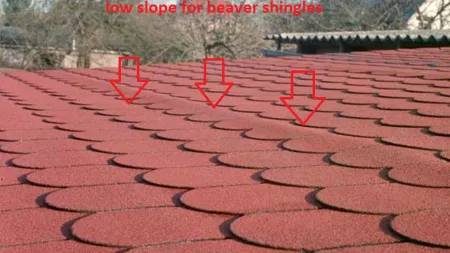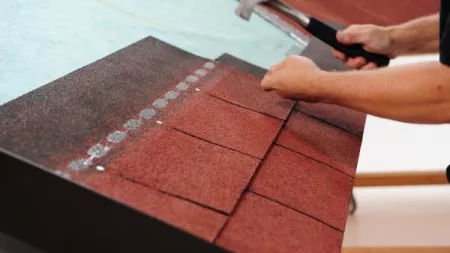
Buckled shingles: How did my new shingle roof become wrinkled?
Keeping your roof in good condition is a crucial home maintenance task. Buckled shingles can quickly lead to interior leaks causing damage to your walls and creating the need for major repairs. If this happens, your roof needs to be repaired quickly to prevent further damage and increased repair costs.
What are buckled shingles?
Bitumen roof shingles occasionally show buckles along the length of courses up the roof. First of all it is important to know that buckling is not the failure of shingles.
IMPORTANT!
Bitumen roof shingles have never been proven to buckle by themselves. Buckling is the result of shingles being distorted due to movement of the roof deck on which they were applied.
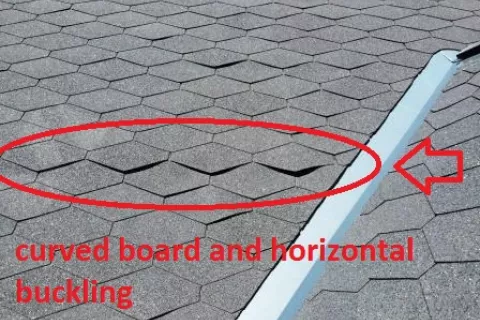

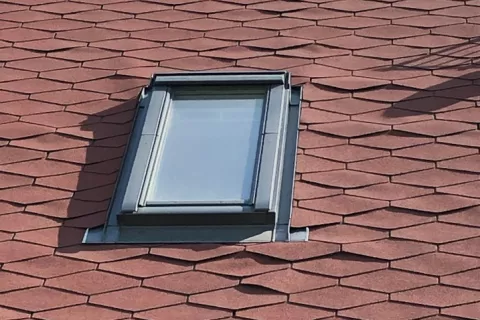
Roof decks that result in buckling of the overlying shingles are typically made out of lumber (also known as “board” or “plank” decks). Wooden boards or planks shrink or swell depending on their moisture content. Adjacent boards on the deck, even though securely nailed to the roof rafters, can shrink or swell at different rates. Shingles nailed to these wooden decks are usually held in place by two rows of roofing nails, each row often fastened into two separate boards. This is often the case when the board width exceeds the shingle exposure, eg. 20 cm boards vs. 14,3 cm shingle exposure. Differential shrinking/swelling of adjacent roof boards can therefore result in buckling of the overlying shingles. Just put a paper on the table and slide the left and right side 2 mm to the center at the same time. The paper curls and the same can happen with shingles on a lumber deck roof.
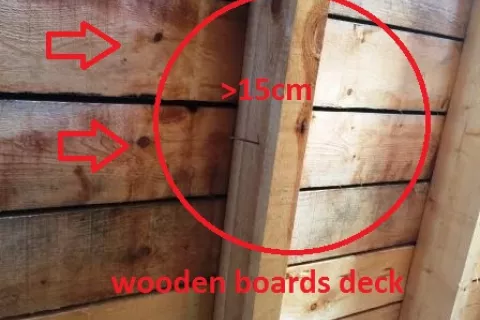
For this reason, the installation of shingles to wet wooden boards is not recommended. All wood lumber must be properly conditioned to be at moisture equilibrium. Also remember that the width of boards must always be less than 15 cm!
However vertical wrinkles/buckles can also occur on the shingle roof even when the deck is made from OSB/plywood boards without adequate spacing between boards. The minimum spacing for dilatation is > 3 mm.
Vertical wrinkles
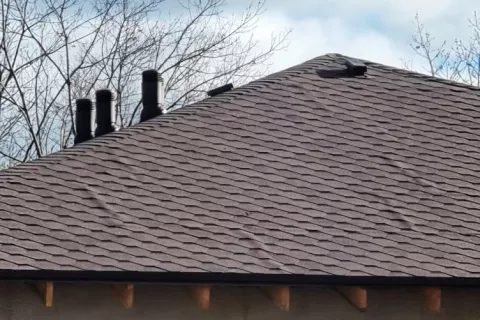
Shrinkage of boards
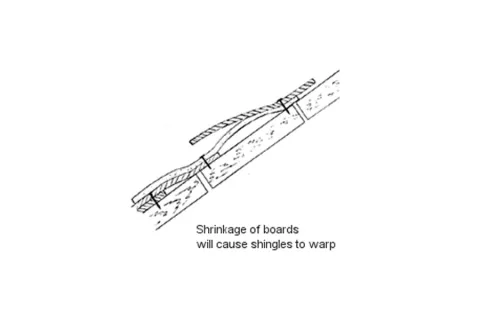
Incorrect spacing between OSB boards
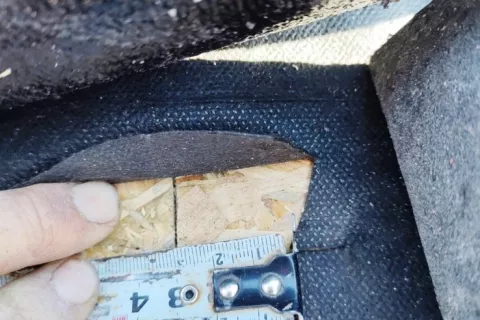
What causes roof shingles to buckle?
- During a certain period of the year we experience a higher humidity. An old roof or its open parts is exposed to this humidity and the wooden planks absorb moisture. As the wood increases in moisture content it can cause movement of the decking.
- When a new roof is installed, moisture is trapped in the system, and the roofing underlayment can absorb moisture and wrinkle.
- After an interior remodeling of the attic, too much moisture can also occur. With the lack of ventilation, wet processes with drywall and plastering might cause the wrinkling of shingles.
- Because homes are built tighter and have higher insulation levels, they may not be properly ventilated. See individual manufacturer’s recommendations for additional ventilation requirements and always check your local build codes regulations.
- Roof sheathing that is not spaced with a minimum of 3 mm can cause buckling due to expansion and contraction.
- Improper installation: failure to apply shingles as directed by the shingle manufacturer’s recommendations.
Pictured: Shingle roof without ventilation
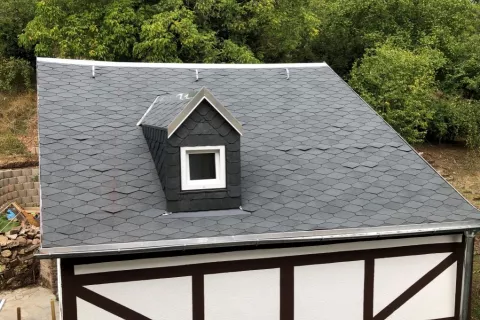
How to solve buckled shingles?
- Allow moisture to escape the roofing system. Once the roofing system reaches the proper moisture content the roof should lay flat and the buckling problem should not return.
- Remove the affected shingles. If the underlayment is wrinkled, repair the wrinkles by cutting and re-nailing the underlay so that itis flat and replace the shingles. Help with Shingle Stick if necessary.
- Ensure that the roof attic is properly vented. For a standard sloped roof up to 40 degrees the minimum requirements are 1 m² of the Net Free Area/NFA per 300 m² of insulated ceiling area located under the roof, always divided evenly between the eaves (for air intake) and the ridge (for air exhaust). If you have good vapor barriers in the house, you can reduce the NFA (Net Free Area) about 40%, but always follow local building regulations.
>>> BLOG TIP: A more detailed explanation about roof and attic ventilation.
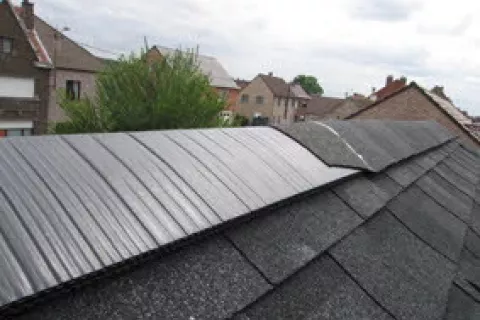
Follow our application instructions to make sure your roof is installed perfectly!
How can I prevent buckled shingles?
- Use only wood decking materials approved by the roofing manufacturer. These materials must be properly conditioned to be at moisture equilibrium with the job site environment.
- Do not expose decking materials to water before or after application.
- Cover wood deck materials with an approved IKO Armourbase underlayment and then apply shingles.
- Ensure adequate attic ventilation. See individual manufacturer’s recommendations for additional ventilation requirements.
- Apply shingles in accordance with IKO shingle manufacturers’ recommendations.
Wood will expand when it gets wet. Even increases in the moisture conditions around the decking lumber can cause expansion. The tendency of this expansion will cause buckling of shingles on the roof. If possible, always allow the decking material to acclimatize to the conditions where they are being installed.
>>> BLOG TIP: Learn more on how to ensure a stable roof deck.
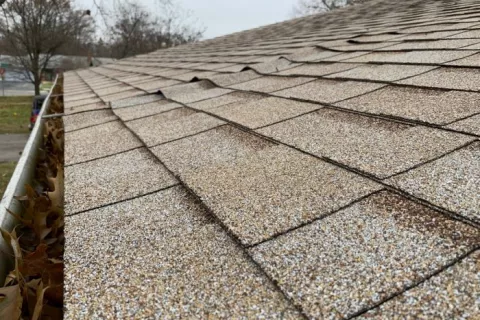
Some additional tips:
- For the best result use OSB boards in tongue and groove. Then it is not necessary to foresee a 3 mm spacing between the boards because the dilatation gap is in the lock.
- It is always better to cover old wooden boards sheathing with a new layer of thin OSB boards.
- If you are forced to apply wooden boards for decking, try to use boards with shiplap or tongue & groove joints.
- Always use a proper fastener for decking: use long enough nails with ringed or twisted shank.
- The best option for the fastening of shingles is IKO barbed roofing nails or coiled roofing nails when using a nail gun.
- The fastest way to repair an unventilated roof is to install Armourvent Multi ridge ventilation.
Pictured: Tongue & groove joint (left) - Shiplap joint (right)
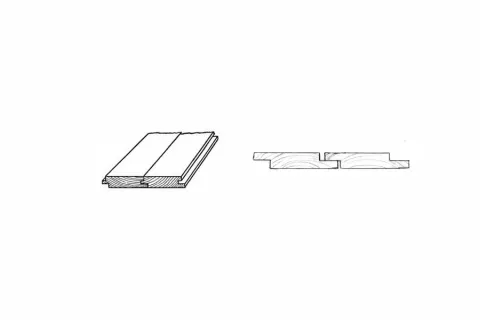
So if you follow our installation guidelines and avoid the traps mentioned above, your IKO roof will not suffer from buckled shingles. Good luck!

